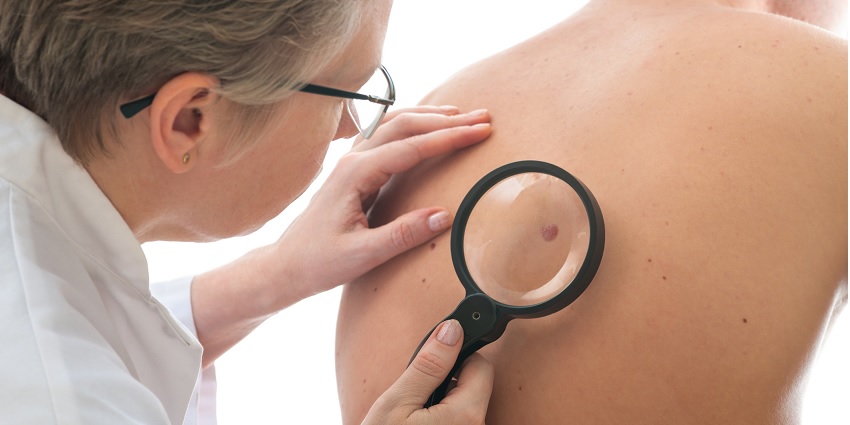As I continue to upgrade the Hosting system – here is an article on Melanoma published in www.skininc.com. (Skin Inc is a wonderful information resource for all skincare professionals.) The most dangerous form of skin cancer, these cancerous growths develop when un-repaired DNA damage to skin cells triggers mutations that lead the skin cells to multiply rapidly and form malignant tumors. These tumors originate in the pigment-producing melanocytes in the basal layer of the epidermis.
Study of p15 and its connection to Melanoma formation
The scientific community may be one step closer with a recent study that linked the protein p15 to melanoma formation. In the American Journal of Pathology, John T. Seykora, MD, Ph.D., a professor of dermatology in the Perelman School of Medicine at the University of Pennsylvania, led a study that associated decreased levels of the gene p15 with a nevus (a mole comprised of non-cancerous cells) transitioning to a melanoma. In other words, p15 inhibits nevus cell proliferation; therefore, decreased levels lead to an increased chance that the cancer would develop.
A decreased expression in protein p16 has also been associated with melanoma, but the team believes p15 to be the primary driver cell senescence in nevus cells. The team stained human nevus and the cancerous tissue samples with p15 and p16 antibodies. Staining was evaluated and graded for percentage and intensity to determine an “H score,” which correlates with the level of protein in the cells. This approach could also form the basis of a clinical determination, taking the form of an antibody test for p15 from a patient’s biopsy specimen. RNA was also extracted from 14 nevus and melanoma tissue samples to determine levels of p15 mRNA. The expression of p15 mRNA was significantly increased in melanocytic nevi compared with cancerous cells as determined by real-time quantitative RT-PCR analysis.

The team of researchers is confident that this new research is a breakthrough for the field of dermatology. It will potentially help doctors determine if a mole has transformed, especially in difficult cases. The team projects completing the research in the next few years.
For skin care professionals in USA can take part in the fight against skin cancer by detecting suspicious moles early, Face & Body Midwest has partnered with the Melanoma Foundation of New England to offer an two on-site skin cancer education programs on Jan. 22 and Jan. 23, 2017.








